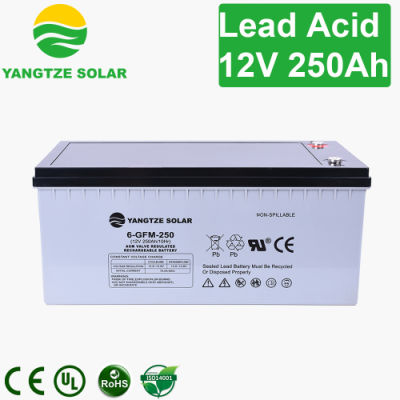
How Lithium Batteries Work
Lithium batteries power a mind-boggling array of electronic devices and cordless power tools. They’re also used in plug-in hybrids and electric vehicles.
Like many other battery types, lithium batteries contain critical minerals such as cobalt and graphite. When disposed of improperly, these materials can cause fires such as those caused by e-bikes and e-scooters.
Lithium Ion Battery Animation
Lithium-ion batteries power everything from laptops and mobile phones to hybrid and electric cars. They are fast to charge and can deliver a powerful burst of energy. They also perform efficiently in high-stress conditions, unlike lead-acid batteries.
The key feature of lithium-ion battery technology is that the cathode and anode are made of materials that can ‘intercalate’ or ‘absorb’ lithium ions. When the battery discharges, the intercalated ions move from the anode to the cathode. They are accompanied by electrons, which provide the electrical current.
Argonne researchers used the TEM to visualize the movements of the anode, cathode and separator (a porous layer in between the electrodes) inside an operating battery cell. This helped them understand two challenges with lithium-metal batteries: they swell and shrink during charging and discharging, and they may sometimes experience thermal runaway.
The swelling of the anode, in particular, reduces the battery’s efficiency and lifetime. It can also lead to the formation of detrimental materials on the anode’s surface, which might eventually cause it to short circuit and stop working. To avoid this, researchers are working on options like using graphene instead of standard graphite for the anode.
Anode
The electrode that loses electrons during discharge is called the anode. The electrode that gains electrons during charge is the cathode. When a battery is connected to a load, electricity flows through the cathode and anode, creating a flow of ions from one side to the other that provides energy to power your device.
The anode and cathode are both immersed in the electrolyte solution, but they have different roles during charging and discharging. Normally, the anode is the negative terminal during charge and the cathode is the positive terminal lithium battery during discharge, but it’s important to remember that conventional current (a flow of positive charges) moves diametrically opposite to the movement of electrons.
For this reason, the mnemonic “Anode Current Departs” is a good way to remember that the anode is the electrode from which conventional current departs in a battery and the cathode is where it arrives. Alkali metals make excellent anode materials because of their low density, low electrochemical potential and ease of handling. They also offer high specific capacity values, which is an important property for batteries that provide a large amount of energy in a small volume.
Cathode
The cathode, or negative terminal of the battery, is where lithium ions are drawn when the battery is lithium battery charged. It is also the source of electrons when the battery discharges. Electrons can also be emitted from the electrode surface of certain metals when light with sufficient frequency passes through them, as in gas-discharge lamps.
The polarity of an electrode is determined by whether it experiences oxidation or reduction. Oxidation is the loss of electrons and reduction is the gain of electrons.
When you insert a lithium battery into your cordless impact driver, the chemistry kicks off. The anode oxidizes, or loses electrons to power the tool, and the cathode gains electrons from the cations that it attracts. Those electrons then follow the path of least resistance through a completed circuit, where they meet their long lost partners and reunite on the other side. All of this happens inside an electrolyte medium that consists of salts, solvents and additives, as well as a separator that keeps the anode and cathode apart during the battery’s operation.
Electrolyte
The medium that allows lithium ions to move between the cathode and anode during charging and discharging. It also keeps the two electrodes apart. Most batteries use a liquid electrolyte such as ether, but others can use other solutions that do not conduct electrons, like salt or acetone.
The ions of sodium, potassium, chloride, calcium and magnesium dissolved in water are electrolytes. Likewise, the positively charged hydrogen and negatively charged chlorine gas produced when household bleach is mixed with water are electrolytes.
In the early 1990s, researchers shifted from a nickel-cadmium design to a non-metallic lithium battery that uses lithium ions instead of metals. Lithium-ion is the fastest-growing battery chemistry today, and is considered safe when proper precautions are taken during charging and discharging. It is also less expensive than nickel-cadmium and lighter than lead-acid batteries.
Current Collectors
A key component of LIBs is current collectors (CC), thin, lightweight metal foils – normally aluminum or copper – that bridge the electrode materials to deliver electrons through the battery’s external circuit. They are ionically insulating but electrically conductive and maintain chemical stability in the non-aqueous electrolyte [3].
When a battery is charged, the current collectors collect the lithium ions that are released by the cathode and receive them from the anode. This produces a flow of electrons that delivers the energy to power our devices and other appliances.
Cui and graduate student Yusheng Ye developed a new type of current collector that is made from a lightweight polymer called polyimide and embedded with a fire retardant called triphenyl phosphate. These CCs not only distribute current evenly but also block dendritic growth of metallic lithium and inhibit SEI formation.
Button-cell lithium batteries – also known as coin lithium – are used in many everyday items including portable music players, digital cameras and remote control cars. Their small size makes them ideal for use in devices where space is limited and the battery has to be removable, such as hearing aids, medical devices and watches.



